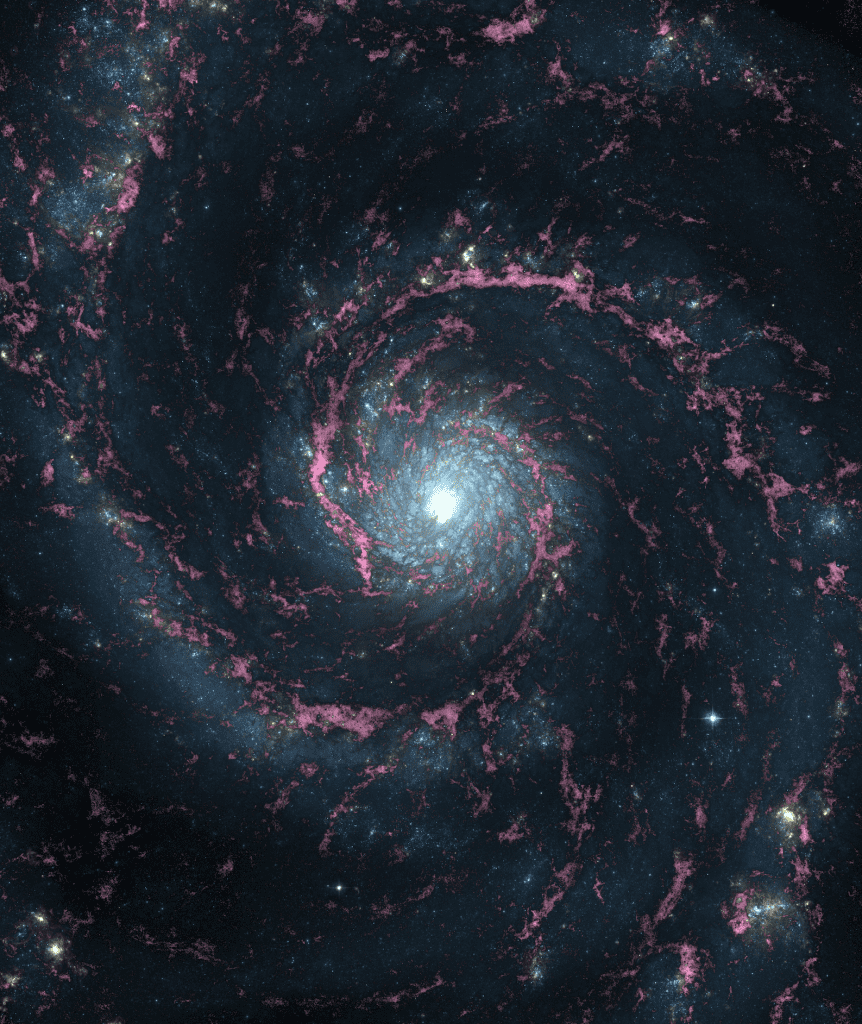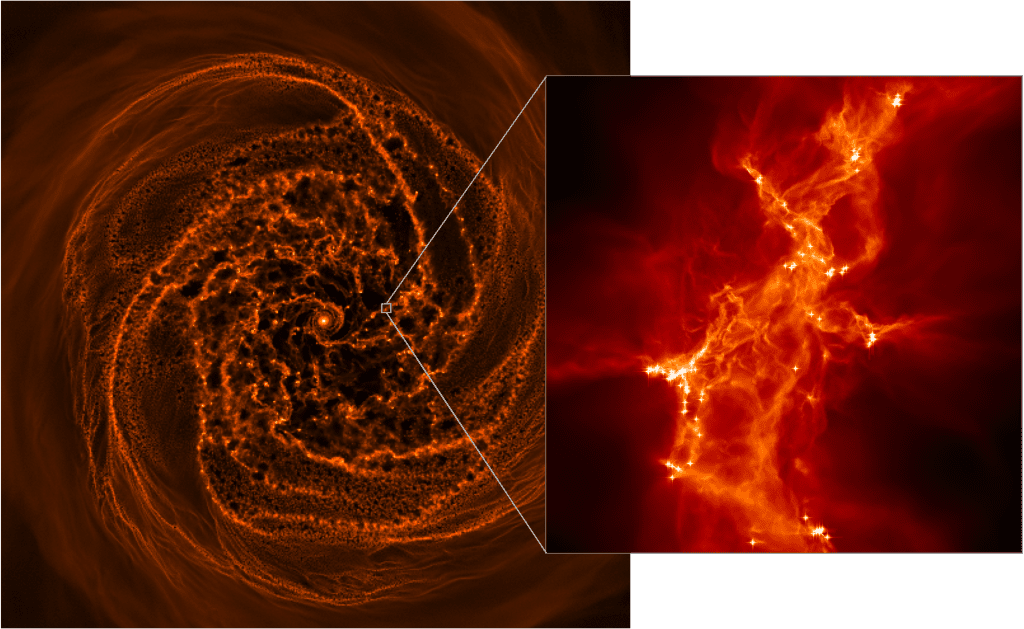Since there has been life, there have been questions about it’s origins, and with the advancement of mankind, that quest for knowledge has only intensified. After thousands of years of wonder, today’s advanced technology is helping scientists get closer to understanding these fundamentals.


While The University of Cardiff sits approximately 150,000 trillion miles away from the centre of the Milky Way, its research team is closer to the stars than ever.
Dr Ana Duarte Cabral is a Royal Society University Research Fellow working out of the Cardiff Hub for Astrophysics Research and Technology, formulating advanced computer simulations of star formation within spiral galaxies.
To speak with Ana is to have your world expanded. With clear passion and impressive eloquence, she can explain the physics behind star formation, how technological models can be created to simulate that process and what the science of star formation can reveal about the universe at its most elemental.
Stars are key to the evolution of the Universe as a whole
“Not only are they responsible for the chemical evolution of all matter in the Universe, but they also regulate the energy budget of galaxies. Indeed, every element on Earth – from the oxygen we breath, the calcium in our bones, the carbon which makes up the blocks for life, the silicon in the rocks, and even the gold in our jewellery – they were all produced either deep inside a star, or in the aftermath of its death!” explains Ana.
Ana fell in love with astronomy at seven years old. She clearly remembers the warm summer night in rural Portugal when she lay in a field with her friends and just stared up at the sky. “For the first time, I had a sense of the immense nature of the Universe around us,” recalls Ana, “it truly opened up my mind.”
Now after years of study, Ana is at the forefront of the astrophysics field, doing work she had only previously dreamed of. Ana’s research is deeply collaborative, involving teams and partners across Europe and the US to create, run and interpret star formation models and deliver world-renowned research. In 2023, Lenovo became a partner of the University of Cardiff, providing Ana’s research team with technology which drastically changed the scale of work they could accomplish.
Ana explained how acquiring Lenovo HPC nodes and storage changed everything. “Before, the simulations took more than three times longer to run, and the limited storage made the analysis extremely complicated to perform.”


“[Access to the technology] has made a true step change to the speed at which our project can achieve our goal – which is to truly understand how the star formation process is regulated by the large-scale dynamics of spiral galaxies like our own. A star takes several hundreds of thousands of years to form, and galaxies can take several tens of millions of years to revolve around themselves. But now with this technology, we are able to create a model of an entire galaxy, tracking the formation and death of generations of stars, in only a matter of weeks.”


Whether or not you possess advanced knowledge of astrophysics, Ana’s models are undeniably impressive. Complex and visually mesmerizing, these simulations capture hundreds of millions of years, telling a story of creation in only a matter of seconds.
“In a way, all science is rooted in a fascination with our own origins. Life develops on hospitable planets; planets develop around stars as they form – to study the birth of stars is to study the birth of life itself.” Thankfully, as mankind has developed, so has technology – exponentially so, enabling unbelievable advances in scientific study.
On the supercomputer I’m mapping 150 million years of evolution – a timespan that is 500 times longer than the length of human history that can be recorded in just four terabytes.
Looking back at the mesmerizing spirals Ana has shared, it seems as if these models represent more than just galactic evolution; they illustrate the inextricable link between science and technology in the Twenty-First Century.
High-resolution gas map of the M51 spiral galaxy (pink), overlayed on the visible light from the stars (blue), and the ionised emission around newly born stars (yellow). Image Credit: H. Faustino Vieira and A. Duarte Cabral (CHART, Cardiff University), NASA, ESA.
